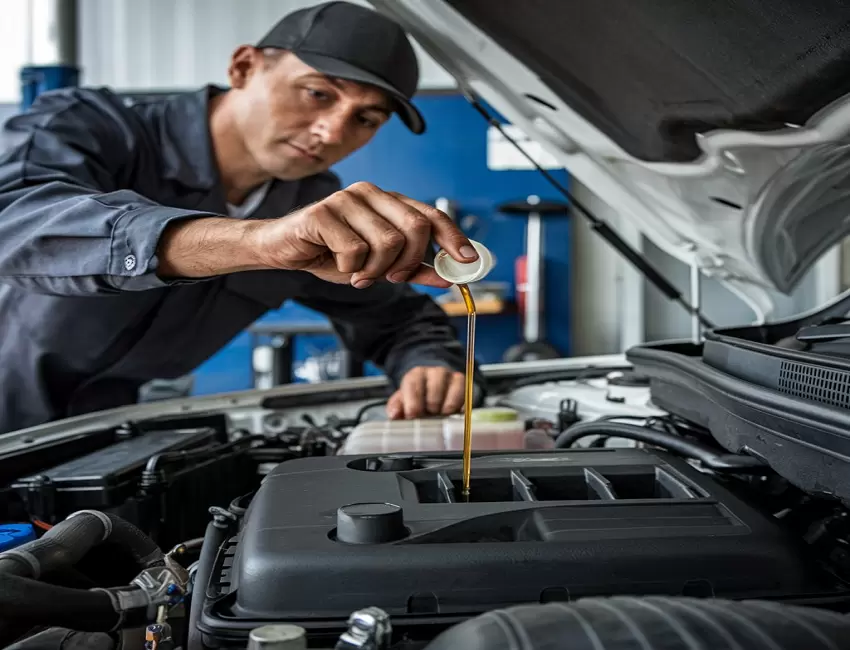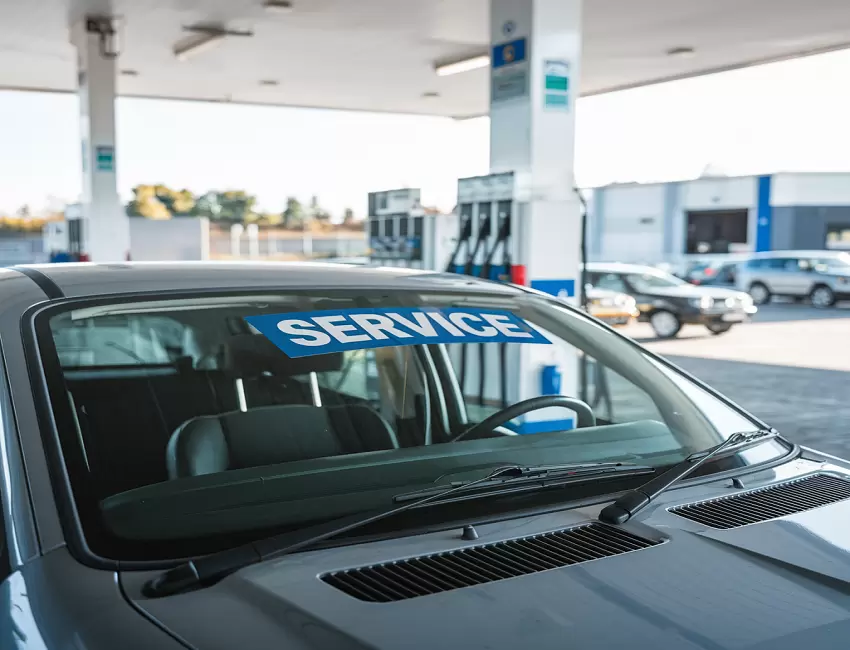To prevent any chronic accident, it is important to ensure that a car has a clear windshield. However, to keep it that way you must properly take care of your Service Windscreen washer system.
This guide will give an in-depth look into how to maintain the main part of the Service Windscreen washer pump.
What is a Service Windscreen Washer Pump and its Purpose?
A Service Windscreen washer pump is an electric pump placed in a car engine compartment or passenger cabin. Its only function is to shoot liquid from windshield washer nozzle jets located on your car’s bonnet.
When one operates the windscreen wiper controls, the washer pump pulls fluid from the reservoir bottle and pushes it through rubber tubing to nozzles. This releases a stream of liquid onto the glass so as to eliminate debris while wiping them off.
| Component | Purpose |
| Washer Pump | Draws and propels fluid through system |
| Hoses | Transport fluid from pump to nozzles |
| Nozzles | Spray jets that mist fluid on glass |
| Wiper Controls | Trigger pump and wipers together |
So in summary, a properly functioning washer pump is crucial to having clear visibility while driving.
Locating Your Specific Windscreen Washer Pump Model
Pump locations can vary between vehicle makes and models. Here are some common spots:
- Under the hood near the core support/radiator area
- Inside the passenger footwell under the dash
- Behind the front bumper
To identify your exact pump, check the owner’s manuals or search online using your vehicle details. It’s important to get the right replacement.
While inspecting, also examine hoses for cracks or leaks that would cause low/no fluid pressure problems. Tighten or replace faulty hoses as part of standard maintenance.
Troubleshooting Common Windscreen Washer Faults
Clogged or Frozen Nozzles
If fluid sprays weakly or unevenly, nozzles could be restricted. Clean them using a stiff wire or needle to clear blockages. Some models have removable nozzles for easy access.
Kinked or Clogged Hoses
A lack of fluid at the nozzles may mean hoses need replacement. Gently squeeze to check for splits letting air in too. Replace any hoses that feel hard or lumpy inside.
Electrical or Mechanical Pump Issues
Symptoms like intermittent or no spraying could point to a faulty pump. Try troubleshooting steps like checking fuses first before considering replacement. Pumps last 3-5 years on average.
How to Know When Replacement is Needed

- Pump makes unusual noises when running
- Fluid flow/pressure is very low even with a full reservoir
- Pump fails to turn on at all
- Unit is more than 5 years old
- Previous repair attempts were unsuccessful
It’s best not to ignore symptoms, as this could lead to more extensive repairs down the line. Have the pump and Service Windscreen checked if persistently problematic.
Comparing Replacement Options
OEM pumps from $50-150 depending on vehicle and dealer, while generic/universal pumps range $20-80. Aftermarket parts are often sufficient for most drivers but do thorough research first.
Generic pros:
- Much cheaper cost
- May include mounting hardware
Cons:
- Varied quality/longevity
- Improper fit possible
- Lack OEM warranties
Overall, balancing price vs reliability, genuine or high-rated aftermarket pumps offer the best value for regular use vehicles.
Removing the Old Pump
Always disconnect the battery terminal before working around electrical components. Consult your manual to locate mounting bolts, clips or wire harness plugs securing the pump in place.
Photographing disassembly steps helps ensure proper reinstallation order. Removal usually involves:
- Detaching hoses from pump ports
- Removing mounting bolts/clips
- Disconnecting electrical connector
- Lifting pump from position
Proper labeling prevents confused hoses or wires later. Clean any residual fluid or dirt from the pump area as well.
Installing the New Pump: Service Windscreen
Installation mirrors removal but in reverse order. First, slide the pump into position while guiding hoses/wires through access points.
When bolting/clipping down:
- Finger-tighten bolts before final torque
- Avoid over tightening plastic clips
- Connect 12V power wire harness plug securely
Reattach any protective covers, then refill the washer bottle and bleed air from the pump by testing sprays. Recheck tightness after driving to prevent leaks.
Maintaining System Performance
Beyond pump replacements, keeping fluid lines and nozzles clear maintains peak performance. Periodically:
- Flush system with distilled vinegar to dissolve mineral buildup
- Use windshield washer fluid with antifreeze in winter climates
- Check fluid level in bottle reservoir monthly
Also inspect under-hood components like belts and hoses for any wear and tear. Minor nicks could develop into bigger failures down the road. Catching issues early saves greater hassle and cost later on.
Preventing Future Problems

Consistent maintenance is key to the system’s longevity:
- Refill washer fluid bottles with every fuel fill-up
- Park vehicle covered if leaving for several weeks
- Avoid using pump/wipers without fluid (causes premature wear)
- Choose windshield washer fluids carefully some may damage paint
- Regularly check hoses/nozzles for cracks from weathering
With proactive care, a windscreen washer pump can run smoothly for many years of driving trouble-free.
Maintenance is Regularly:
A key part of vehicle maintenance is regularly servicing the windscreen and washer system. This front-facing glass takes abuse from stone chips sun damage and winter weather elements over time.
Proper Service Windscreen care involves periodic inspections for cracks or issues that could impact visibility and safety. Many auto service shops offer windscreen repair and replacement Service Windscreen using OEM-grade glass.
They can also perform thorough washer fluid system checks and fluorine treatments that restore clarity and repel water. Regular fluid top-ups and seasonal adjustments help maximize cleaning ability. Routine windscreen maintenance done by experts helps protect your investment and comply with inspection regulations in most areas.
Conclusion:
Whether replacing or repairing a failed pump yourself using this DIY guide or taking it to a shop, keeping the Service Windscreen washer system operating at peak performance is important.
A clean view of the road ahead improves safety for both the driver and fellow motorists. With regular maintenance and servicing of components like the washer pump and Service Windscreen, this vital system will remain ready to clear debris with just a squeeze of the controls. Always be sure to look up specifics for your vehicle make and Service Windscreen model as needed.
FAQ: Service Windscreen
What fluid ratio should I use in the summer?
A 3:1 or 2:1 ratio of water to windshield washer fluid works well in warmer climates as it doesn’t streak as much as straight fluid but still cleans effectively. Check your owner’s manual for the recommended blend.
How difficult is replacing the pump?
Pump replacements range from fairly easy to more complicated depending on your vehicle model. Most are accessible under the hood but some require dashboard removal. Consult your manual beforehand and take photos during disassembly.
Can I add anything to improve performance?
Using distilled white vinegar helps cut through built-up mineral deposits that can clog lines over time. A 1:1 vinegar to washer fluid solution circulated through the system every few months helps maximize pressure and spray patterns.
What parts should I replace with the pump?
It’s a good idea to replace brittle rubber hoses that could develop unseen cracks too with age. A complete service kit containing new hoses, nozzle tips and Service Windscreen pump is a cost-effective upgrade for long-lasting performance.
Why is my washer fluid being drained when parked?
A small amount of seepage when parked is normal as pumps aren’t truly sealed. But heavy drainage could point to a bad pump, hose crack or loose connections that require tightening or replacement of worn parts.

With over 5 years of dedicated experience in the automotive industry, I am passionate about all things automotive. My journey began with a deep curiosity for automobiles, which led me to delve deeper into their mechanics, technology and trends. My expertise spans various aspects of the automotive world, from the latest electric vehicles to classic car restoration techniques. Through my articles, I aim to share my knowledge and insights, helping readers stay informed and inspired in the fast-paced world of the automobile.











